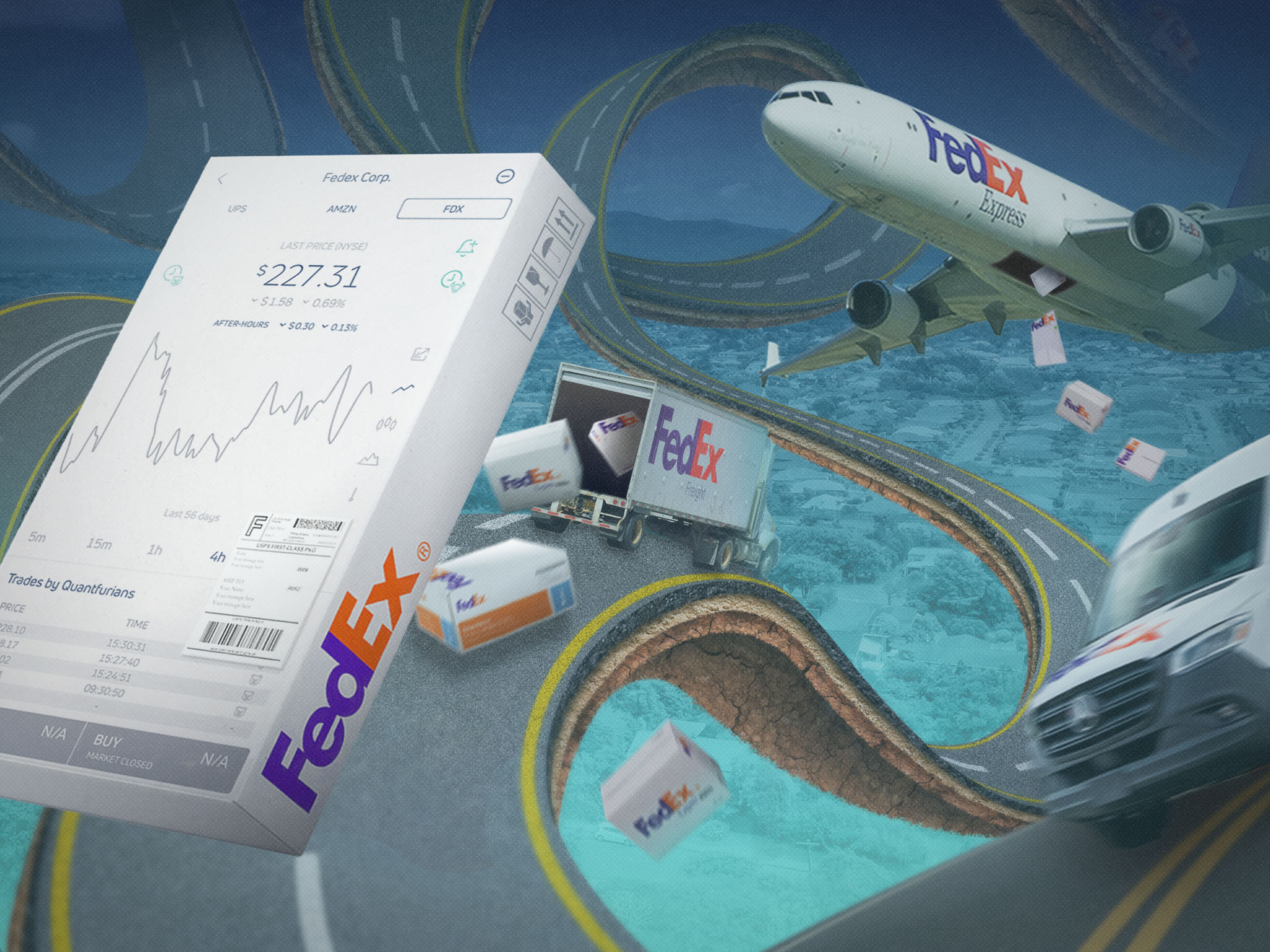Shares of FedEx (NYSE: FDX) slid 4% combined Wednesday and Thursday, after the world’s third-largest delivery company after Amazon (NASDAQ: AMZN) and UPS (NYSE: UPS) reported mixed earnings for its latest quarter.
But the stock already has rebounded 2% Friday, and the outlook may be brighter ahead.
Revenue rose only 0.45% for the period ended May 31 from a year earlier, to $22.2 billion. But profit gained to $1.65 billion, or $6.88 a share, from $1.47 billion, or $5.94 per share.
U.S. tariffs, particularly those directed at China, dented revenue. The China-U.S. trade route makes up 2.5% of FedEx’s revenue.
“There’s a lot happening outside of FedEx,” its CEO Raj Subramaniam said in the earnings conference call. “Trade policies are evolving, and trade patterns are changing…. We continue to apply our digital platform-based solutions to effectively address key pain points amid changing global trade policies.”
Looking ahead
Fedex expects revenue of just unchanged to up 2% in the current quarter ending Aug. 31. “The macroeconomic environment remains uncertain,” said Fedex CFO John Dietrich. “Our outlook is therefore based on current tariff rates, recent trends we’re seeing, as well as that which we’re hearing from our customers.”
But the company may be poised for long-term success. It implemented a program called DRIVE in 2022 to increase efficiency, improve service, cut costs, and strengthen performance culture. That effort has led to $4 billion in cost cuts.
The program includes reduced capital expenditures, reduced flight frequencies, improved labor productivity and a plan to separate its freight business from the rest of Fedex as a stand-alone public company.
Some investors and analysts are enthusiastic about this idea. That’s because freight companies offering less-than-truckload service, like FedEx does, generally trade at higher multiples than FedEx. Less-than-truckload services handle shipments that don’t require full-truck capacity.
Combining express and ground service
In addition, FedEx has implemented a program – Network 2.0 – to merge its express and ground networks to improve efficiency and cut costs. Express is the company’s air-based delivery service, focusing on urgent domestic and international shipments. Ground consists of non-urgent ground-based deliveries in the U.S. and Canada.
The separate status of the two divisions has led to inefficiencies, such as each service delivering a package to the same place at nearly the same time, because they each use their own trucking services.
Analysts are enthusiastic about Fedex’ changes. “With the heavy lifting on DRIVE complete and both DRIVE and Network 2.0 set to scale through fiscal year 2026 and 2027, we see a path to continued [operating profit] growth,” Truist analyst Lucas Server wrote in a commentary cited by Barron’s.
If the U.S. economy can avoid a downturn, FedEx may have plenty of room to run, analysts say. “Macroeconomic uncertainty is elevated due to U.S. tariffs, but we have confidence in continued near-term package-margin progress,” wrote Morningstar analyst Matthew Young. He likes that CEO Subramaniam is moving FedEx from a growth to an efficiency strategy.
Keep in mind, of course, that there’s no guarantee of success.




Comments